Cryogenic Erosion from Needle Ice
2024-02-19
Introduction:
So, here’s a quick post, a photographic journey of how Needle Ice, or Pipkrakes, while small, can be a factor in erosion. That’s right, its Cryogenic Erosion time… Cryo Erosion… Cryosion?
Ignoring that awkward intro, the background is, my parking spot at work is at a bit of a local low for the parking lot, so after a rain, water will collect there and very slowly infiltrate down/evaporate, often taking several days. After a few weeks of warm temperatures and scattered rain, there was a night that dipped below freezing and allowed frost to form.
The morning stayed cold enough that the atmospheric temperature didn’t rise above freezing until about Noon, when my little “experiment” ended.
Without further ado, here are my three observations of the soil near my car. Only three, because as I said, this was during the work day, so I had to make my observations before I clocked in and on breaks.
Overview Observations:
~7:45 AM on the 14th of February 2024.


A few quick overview photos of the site. Note how the smaller particles in the area are raised, with large gaps in between them. General assessment was that particles smaller than ~1 cm were lifted by the ice, anything larger tended to be left behind. Note Figure 2, where a ~1 cm particle was lifted partially by the needle ice, but then fell to its side, showing us a few columns of the needle ice. The depth to the base of the particles left behind and the new surface was measured as ~2 cm.
First Observation:
~7:45 AM on the 14th of February 2024.
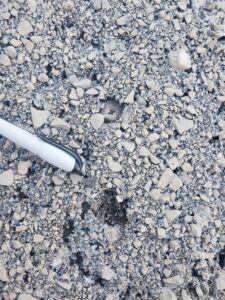
At the time of the overview observations, I also selected an example pebble to monitor over the course of the day. I marked this pebble with an X. Measuring from where the needle ice started to lift to the new surface of the soil, there was about 2 cm of distance.
Second Observation:
~10:00 AM on the 14th of February 2024.
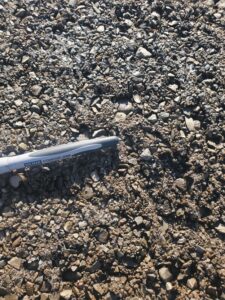
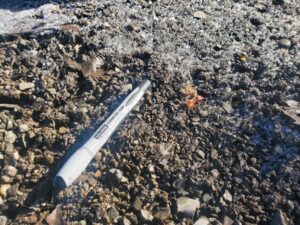
After two hours, the temperature was still below freezing, but the area around the pebble was experiencing more solar radiation. As one can see from Figure 4, the soil that had been lifted during the First Observation has now subsided a bit, and the pebble is a bit more exposed. In Figure 5, one can see the difference between an area recently exposed to sunlight versus an area that has been exposed to sunlight for a while. The area that has only recently been exposed is raised noticeably more than the area that has been exposed for longer.
Third Observation:
~12:00 PM on the 14th of February 2024.
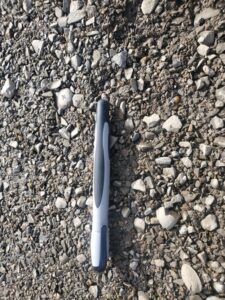
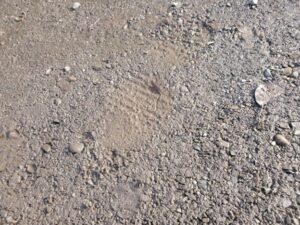
Now, in Figure 6, after 4 hours, one can see what happens after full melting of the needle ice. The marked pebble is mostly uncovered, but, due to the movement of the smaller particles, is now mostly below the level of the soil. In Figure 7, puddles can be seen forming from the melting ice. The top left of the photo is muddy soil, and the bottom left, some is still supported by ice.
Conclusions:
By following the marked pebble through this post, one can see how needle ice causes erosion. It will move the smaller particles, burying the larger ones. On a slope, the smaller particles will slowly migrate downhill, and over large periods of time, this will cause slope failures. Some methods of erosion are faster, but no methods of erosion can be discounted.
Recent Comments